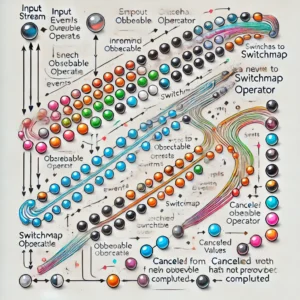Backend frameworks are an essential part of web development, providing a set of tools and libraries that developers can use to create web applications. There are a variety of backend frameworks available, each with its own strengths and weaknesses. In this article, we will explore some of the most popular backend frameworks, including Node.js, Django, Ruby on Rails, and Dot Net, and compare their features, performance, and ease of use.
Node.js is a popular backend framework that uses JavaScript, a language that is commonly used in web development. It is known for its scalability and speed, making it a popular choice for building real-time applications. Django, on the other hand, is a Python-based framework that follows the model-view-controller (MVC) architectural pattern. It is known for its simplicity and ease of use, making it a great choice for beginners.
Ruby on Rails is another popular framework that uses the Ruby programming language. It is known for its convention over configuration approach, which allows developers to focus on writing code rather than configuring the application. Finally, Dot Net is a Microsoft-backed framework that is used to build enterprise-level applications. It is known for its scalability and reliability, making it a popular choice for large organizations.
Understanding Backend Frameworks
Definition and Importance
A backend framework is a software framework that provides the necessary tools and libraries to develop the server-side of web applications. It is responsible for handling tasks such as database management, server-side scripting, and API development. Backend frameworks are essential to building scalable and reliable web applications.
Using a backend framework simplifies the development process by providing pre-built components and libraries that can be used to build complex web applications. This allows developers to focus on building the business logic of the application rather than worrying about low-level implementation details.
Backend frameworks also provide a standardized way of building web applications, which makes it easier for developers to collaborate and maintain the codebase. This is especially important in large development teams where multiple developers are working on the same codebase.
Key Components
Backend frameworks typically consist of the following key components:
- Web Server: The web server is responsible for receiving requests from clients and sending responses back. It handles tasks such as routing, request handling, and middleware management.
- Database Management: The database management component is responsible for managing the application’s database. It provides an interface for developers to interact with the database and handles tasks such as data retrieval, storage, and manipulation.
- Server-Side Scripting: The server-side scripting component is responsible for generating dynamic content on the server. It allows developers to write code that executes on the server and generates HTML, CSS, and JavaScript that is sent to the client.
- API Development: The API development component is responsible for providing an interface for external services to interact with the application. It allows developers to expose certain functions or data to external services in a standardized way.
In summary, understanding backend frameworks is essential to building scalable and reliable web applications. Backend frameworks provide pre-built components and libraries that simplify the development process, and they provide a standardized way of building web applications that makes it easier for developers to collaborate and maintain the codebase. The key components of a backend framework include the web server, database management, server-side scripting, and API development.
Exploring Node.js
Features
Node.js is a popular open-source, cross-platform, JavaScript runtime environment that is built on Chrome’s V8 JavaScript engine. It is designed to execute JavaScript code outside of a web browser, making it a powerful tool for server-side web development. Here are some of the key features of Node.js:
- Asynchronous and Event-Driven: Node.js is built on an event-driven, non-blocking I/O model, which makes it lightweight and efficient for handling large amounts of data and requests.
- Scalable: Node.js is designed to handle large-scale applications with ease, thanks to its ability to handle multiple requests simultaneously.
- Extensible: Node.js has a rich library of modules and packages that can be easily installed and integrated into your project.
- Fast: Node.js is known for its speed and performance, thanks to its use of the V8 engine.
Use Cases
Node.js is a versatile framework that can be used for a wide range of applications. Here are some common use cases for Node.js:
- Real-time applications: Node.js is ideal for building real-time applications such as chat apps, online gaming platforms, and collaborative tools.
- API development: Node.js is a great choice for building APIs due to its scalability, speed, and extensibility.
- Microservices: Node.js is a great choice for building microservices due to its lightweight and efficient nature.
- Single-page applications: Node.js is often used in conjunction with front-end frameworks like React or Angular to build single-page applications.
Overall, Node.js is a powerful and versatile framework that can be used for a wide range of applications. Its speed, scalability, and extensibility make it a popular choice for web developers around the world.
Diving into Django
Features
Django is a high-level Python web framework that is designed to make web app development faster and easier. It has a number of features that make it a popular choice for developers, including:
- Object-relational mapping (ORM) layer that allows developers to interact with databases using Python objects instead of SQL statements.
- Built-in admin interface that makes it easy to manage and update the content of a website or web app.
- Robust security features, including protection against common web vulnerabilities like SQL injection and cross-site scripting (XSS).
- Scalability through the use of caching, load balancing, and other techniques.
- Support for a wide range of third-party libraries and extensions that can be used to add functionality to a Django project.
Use Cases
Django is a versatile framework that can be used for a wide range of web app development projects. Some common use cases include:
- Content management systems (CMS) that require a powerful admin interface for managing content.
- E-commerce sites that need to handle large volumes of transactions and require robust security features.
- Social networking sites that require a high degree of scalability and support for user-generated content.
- Data-driven web applications that require complex data models and interactions with databases.
Overall, Django is a powerful and flexible backend framework that can be used to build a wide range of web applications. Its features and ease of use make it a popular choice for developers looking to build complex and scalable web apps.
Unraveling Ruby on Rails
Features
Ruby on Rails is a web application framework that follows the Model-View-Controller (MVC) architecture. It is built on the Ruby programming language and emphasizes convention over configuration (CoC) and don’t repeat yourself (DRY) principles. Some of the key features of Ruby on Rails include:
- Rapid development: Ruby on Rails allows developers to build web applications quickly and efficiently. It provides a set of tools and conventions that make it easy to get started and speed up the development process.
- Convention over configuration: Ruby on Rails follows the convention over configuration principle, which means that it provides a set of default conventions that developers can use to build their applications. This makes it easier to get started and reduces the amount of configuration that developers need to do.
- Modular design: Ruby on Rails is designed to be modular, which means that developers can add or remove components as needed. This makes it easy to customize the framework to meet the specific needs of a project.
- Testing support: Ruby on Rails provides built-in support for testing, which makes it easier to write and run tests for web applications. This helps to ensure that the application is working as expected and reduces the risk of bugs and errors.
Use Cases
Ruby on Rails is a versatile framework that can be used for a wide range of web applications. Some of the common use cases for Ruby on Rails include:
- E-commerce websites: Ruby on Rails provides a set of tools and conventions that make it easy to build e-commerce websites. It provides support for payment gateways, shopping carts, and other e-commerce features.
- Social networking websites: Ruby on Rails is well-suited for building social networking websites. It provides support for user authentication, user profiles, and other social networking features.
- Content management systems: Ruby on Rails can be used to build content management systems (CMS) that allow users to create, edit, and publish content. It provides support for content modeling, versioning, and other CMS features.
- Web applications: Ruby on Rails can be used to build a wide range of web applications, from simple to complex. It provides a set of tools and conventions that make it easy to get started and speed up the development process.
Decoding Dot Net
Features
Dot Net is a popular open-source framework for building web applications. It is known for its robustness, scalability, and security. Here are some of the key features of Dot Net:
- Cross-platform compatibility: Dot Net can run on multiple operating systems, including Windows, Linux, and macOS, making it a versatile framework for developers.
- Language-independent: Dot Net supports multiple programming languages, including C#, F#, and Visual Basic, making it a flexible option for developers with different language preferences.
- Large community support: Dot Net has a large community of developers who contribute to its development and provide support to fellow developers.
- Integrated development environment (IDE): Dot Net comes with an integrated development environment, Visual Studio, which provides a range of tools for developing, testing, and deploying applications.
Use Cases
Dot Net is a widely used framework for building web applications across different industries. Here are some of the common use cases for Dot Net:
- Enterprise applications: Dot Net is a popular choice for building enterprise applications due to its scalability, security, and cross-platform compatibility.
- E-commerce applications: Dot Net provides a range of tools and libraries for building e-commerce applications that can handle high traffic and complex transactions.
- Cloud applications: Dot Net can be used to build cloud applications that can be deployed on popular cloud platforms such as Microsoft Azure and Amazon Web Services.
In summary, Dot Net is a versatile framework that offers a range of features and capabilities for building web applications. Its cross-platform compatibility, language independence, and large community support make it a popular choice for developers across different industries.
Comparative Analysis
When exploring different backend frameworks, it’s important to compare them based on various factors. This comparative analysis will explore the performance, scalability, learning curve, and community support of Node.js, Django, Ruby on Rails, and Dot Net.
Performance
When it comes to performance, Node.js and Dot Net are known for their speed and efficiency. Node.js is built on the V8 engine, which allows it to handle large amounts of data quickly. Dot Net, on the other hand, is optimized for Windows and can handle heavy workloads with ease.
Django and Ruby on Rails are also fast, but they have a slightly higher overhead due to their use of interpreted languages. However, they make up for this with their ease of use and flexibility.
Scalability
Scalability is an important factor when choosing a backend framework, as it determines how well the framework can handle an increasing number of users and requests. Node.js and Dot Net are highly scalable and can handle thousands of requests per second.
Django and Ruby on Rails are also scalable, but they require more resources to handle high traffic. However, they make up for this with their ability to handle complex applications.
Learning Curve
The learning curve of a backend framework is also an important consideration, as it determines how quickly developers can get up to speed and start building applications. Node.js and Dot Net have a steep learning curve, as they require knowledge of specific programming languages and frameworks.
Django and Ruby on Rails, on the other hand, have a gentler learning curve. They are both built on popular programming languages (Python and Ruby, respectively) and have extensive documentation and community support.
Community Support
Community support is crucial when it comes to backend frameworks, as it determines how quickly developers can get help when they run into issues. Node.js and Ruby on Rails have large and active communities, with extensive documentation, forums, and online resources.
Django and Dot Net also have strong communities, but they are slightly smaller than those of Node.js and Ruby on Rails. However, they still have plenty of resources and support available for developers.
In conclusion, when comparing Node.js, Django, Ruby on Rails, and Dot Net, it’s important to consider factors such as performance, scalability, learning curve, and community support. Each framework has its own strengths and weaknesses, and developers should choose the one that best fits their needs and requirements.
Conclusion
In conclusion, choosing a backend framework depends on various factors such as the project requirements, development team’s expertise, and scalability needs. Node.js, Django, Ruby on Rails, and Dot Net are some of the most popular backend frameworks used by developers worldwide.
Node.js is known for its high performance and scalability, making it ideal for building real-time applications. It also has a vast library of modules and packages that make development faster and easier.
Django, on the other hand, is a feature-rich framework that emphasizes simplicity and readability. Its object-relational mapping (ORM) layer provides an easy way to interact with databases, making it suitable for building complex web applications.
Ruby on Rails is another popular backend framework that prioritizes convention over configuration. It follows the model-view-controller (MVC) architecture and has a vast community of developers contributing to its development.
Dot Net is a Microsoft framework that offers a comprehensive set of tools and libraries for building web applications. It is known for its security features and enterprise-level scalability, making it a popular choice for large-scale applications.
In summary, each framework has its strengths and weaknesses, and choosing the right one depends on the specific needs of the project. Developers should consider factors such as performance, scalability, ease of use, and community support when selecting a backend framework.






